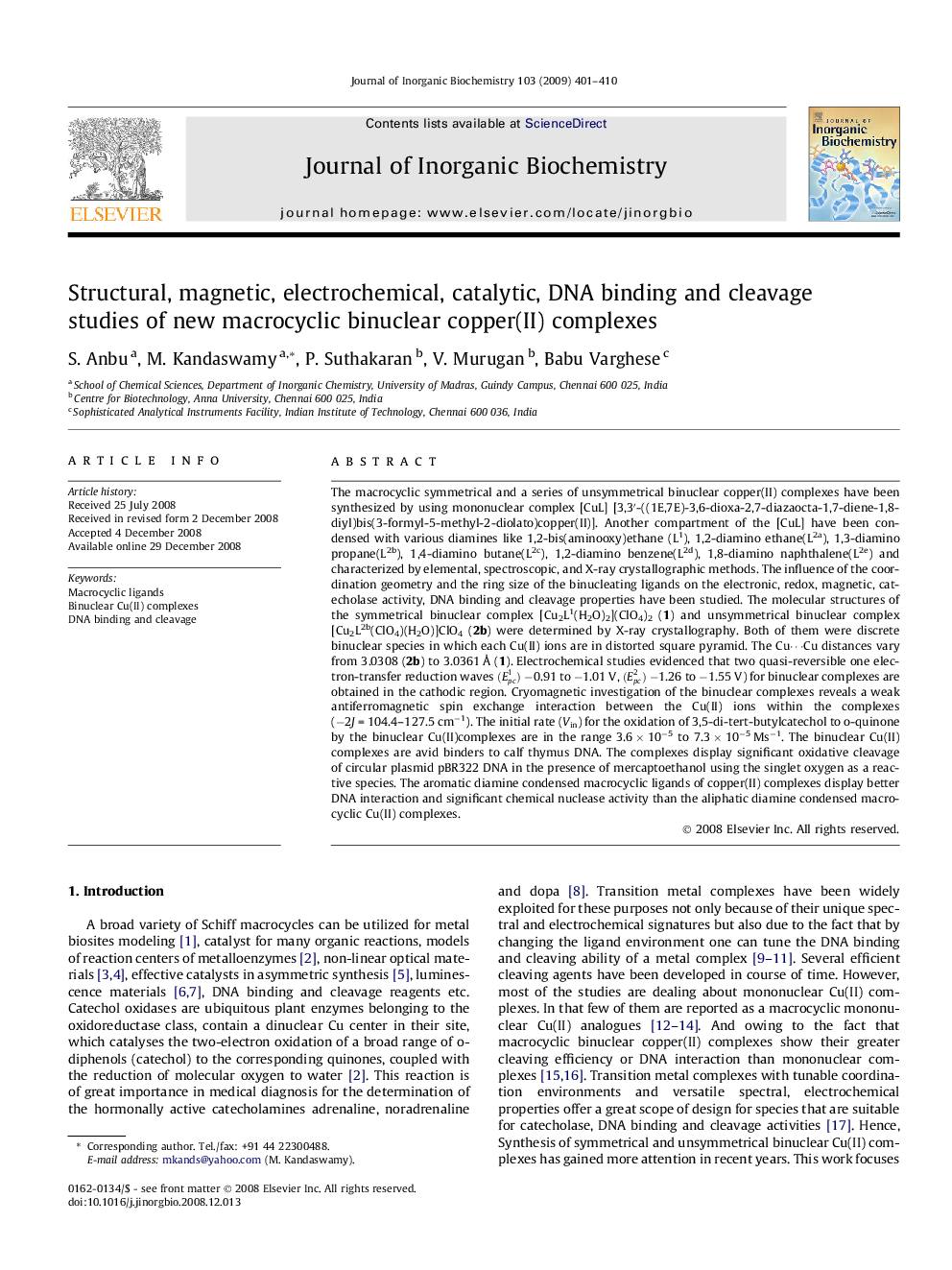| کد مقاله | کد نشریه | سال انتشار | مقاله انگلیسی | نسخه تمام متن |
|---|---|---|---|---|
| 1318057 | 976641 | 2009 | 10 صفحه PDF | دانلود رایگان |

The macrocyclic symmetrical and a series of unsymmetrical binuclear copper(II) complexes have been synthesized by using mononuclear complex [CuL] [3,3′-((1E,7E)-3,6-dioxa-2,7-diazaocta-1,7-diene-1,8-diyl)bis(3-formyl-5-methyl-2-diolato)copper(II)]. Another compartment of the [CuL] have been condensed with various diamines like 1,2-bis(aminooxy)ethane (L1), 1,2-diamino ethane(L2a), 1,3-diamino propane(L2b), 1,4-diamino butane(L2c), 1,2-diamino benzene(L2d), 1,8-diamino naphthalene(L2e) and characterized by elemental, spectroscopic, and X-ray crystallographic methods. The influence of the coordination geometry and the ring size of the binucleating ligands on the electronic, redox, magnetic, catecholase activity, DNA binding and cleavage properties have been studied. The molecular structures of the symmetrical binuclear complex [Cu2L1(H2O)2](ClO4)2 (1) and unsymmetrical binuclear complex [Cu2L2b(ClO4)(H2O)]ClO4 (2b) were determined by X-ray crystallography. Both of them were discrete binuclear species in which each Cu(II) ions are in distorted square pyramid. The Cu⋯Cu distances vary from 3.0308 (2b) to 3.0361 Å (1). Electrochemical studies evidenced that two quasi-reversible one electron-transfer reduction waves (Epc1) −0.91 to −1.01 V, (Epc2) −1.26 to −1.55 V) for binuclear complexes are obtained in the cathodic region. Cryomagnetic investigation of the binuclear complexes reveals a weak antiferromagnetic spin exchange interaction between the Cu(II) ions within the complexes (−2J = 104.4–127.5 cm−1). The initial rate (Vin) for the oxidation of 3,5-di-tert-butylcatechol to o-quinone by the binuclear Cu(II)complexes are in the range 3.6 × 10−5 to 7.3 × 10−5 Ms−1. The binuclear Cu(II) complexes are avid binders to calf thymus DNA. The complexes display significant oxidative cleavage of circular plasmid pBR322 DNA in the presence of mercaptoethanol using the singlet oxygen as a reactive species. The aromatic diamine condensed macrocyclic ligands of copper(II) complexes display better DNA interaction and significant chemical nuclease activity than the aliphatic diamine condensed macrocyclic Cu(II) complexes.
Journal: Journal of Inorganic Biochemistry - Volume 103, Issue 3, March 2009, Pages 401–410